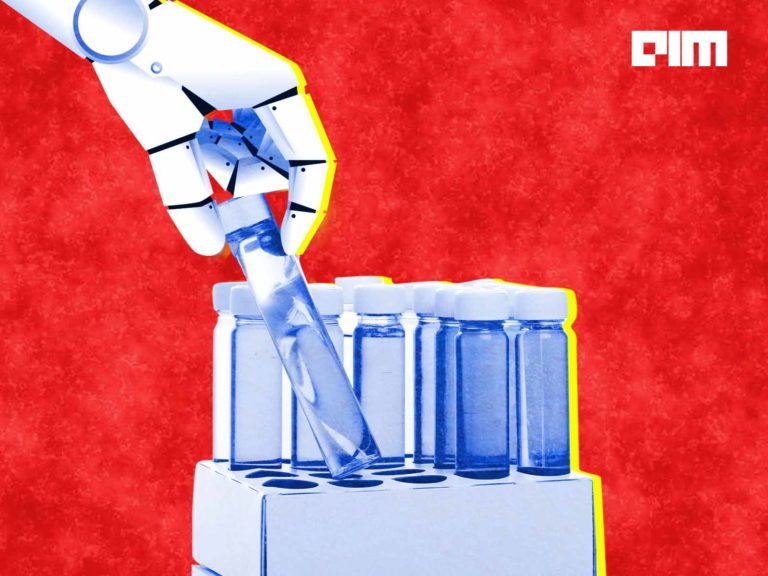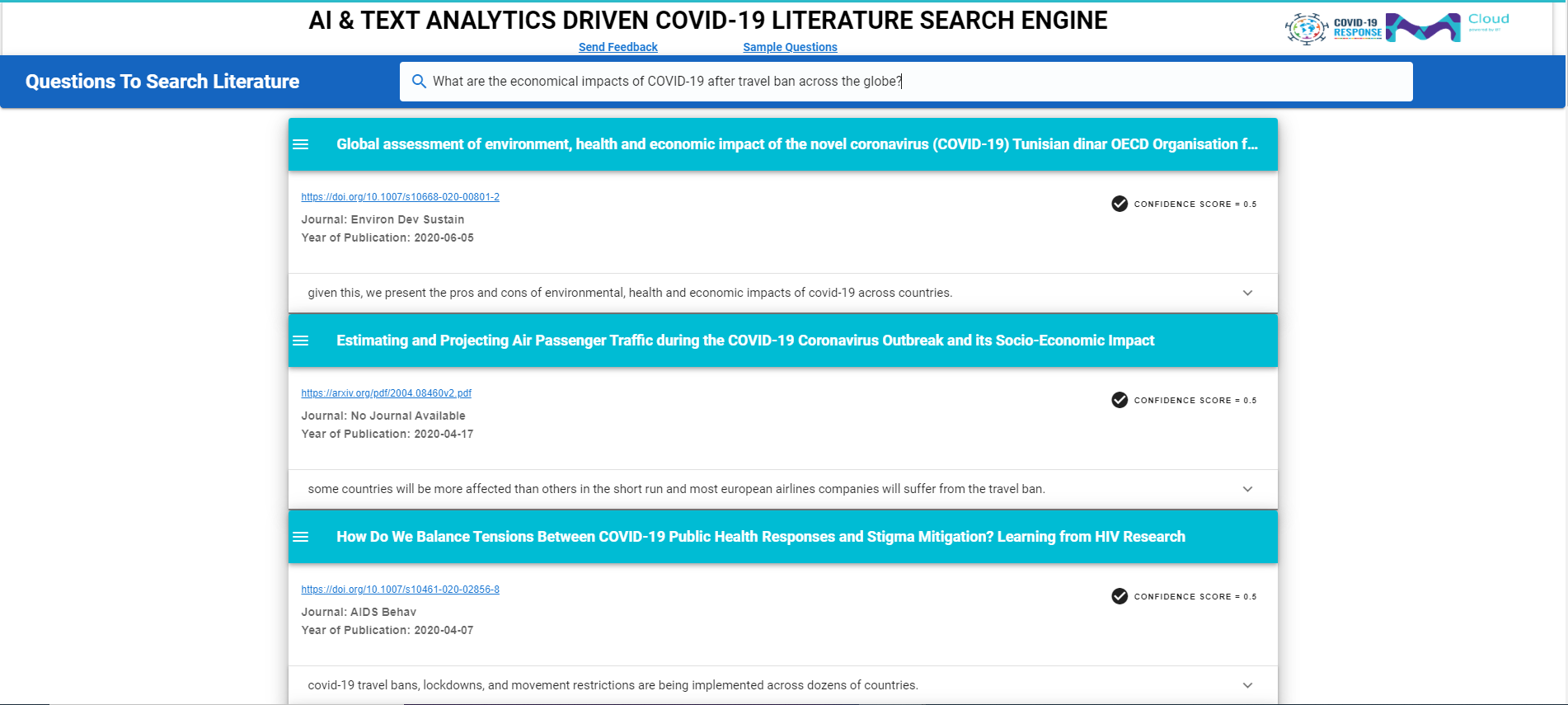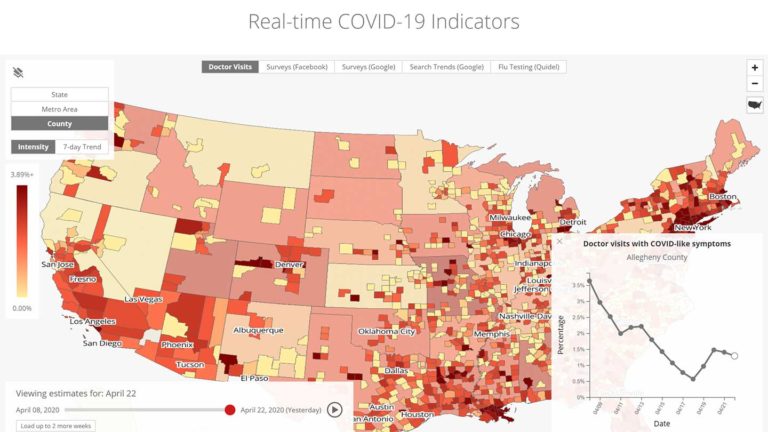In this crisis of global pandemic leading to lockdown, Information Technology (IT) is helping a lot in communication with the help of various collaboration tools to fill the gap created by social distancing amongst the internal and external teams. The digital experience in this period of uncertainty requires self-managing and self-adapting technologies that operate autonomously without explicit human intervention to perform activities within a multifaceted ecosystem.
Humans will be required for strategic and top-level supervision only, leaving the execution of voluminous operational and tactical level tasks and their management to be handled by these digital technologies. There are various technologies being leveraged to fight back this pandemic by implementing healthcare bots, helpdesk centers, prediction of suspected / positive cases and allowing highly informed data-driven decisions for taking the precautionary steps to control its further spread.
It becomes imperative to make the utilization of these advancements in the technology space amidst the ambit of digital transformation and building a machine-human collaborative environment to overcome the diaspora and trough of disillusionment. It shall also help in the effective execution of Business Continuity Plans (BCP) and Resilience Management Plans along with a need to revisit them if required. Let us have a closer look at these technologies.
1. Robotic Process Automation (RPA)- RPA helps in automating the repetitive, rule-based and mundane tasks primarily at the front-end application layer notwithstanding the automation capability of both front-end and back-end business processes. There is a large consumption of RPA as a service (RPAaaS) happening (involving subscription-based delivery model) where it can also help in tackling the uncertain situation created by this pandemic through the building of Cloud chatbots- both conversational and text by using Natural Language Processing (NLP).
The Cloud chatbots will be accessible to the public and can assist in detecting the prima facie symptoms of the disease and routing the cases to the helpdesk centers for diagnosis and necessary actions. No doubt, this self-managing technology has got different modes of implementation- attended, unattended and hybrid; but the objective is to enable human connectivity and cure with the help of a virtual workforce without obstructing social distancing.
At the same time, the business-related queries or solving the incidents will rely on such digital workforce when human is taking a back foot to test the robustness and scalability of its usage.
2. Artificial Intelligence (AI)/Augmented Intelligence- As AI helps in simulating human intelligence for augmenting the decision-making process and predictions, it is definite that there is the likelihood of a high degree of randomness and uncertainty in the outcomes. In order to bring consistency and make the decisions deterministic, there is a need to understand the patterns and outliers of the suspected and positive pandemic cases.
The outliers are not necessarily irrelevant but are the extreme cases falling outside the threshold limits which help in building exhaustive and adaptable systems. The cured/discharged cases of this pandemic versus the death cases will give better insights to prevent the active cases to happen.
There are also disparate sources involving structured and unstructured datasets that AI systems are capable of processing. Augmented Intelligence systems are self-assuring systems that work on a human-centered partnership model to enhance cognitive performance.
3. Analytics and Machine Learning (ML)- AI is a concept that uses ML as the implementation strategy for building models that can help in a stronger prognosis enabling predicting the likely or expected development of a disease or more specifically the pandemic in this case. A complete prognosis includes the expected duration, function, and description of the course of the disease, such as progressive decline, intermittent crisis, or sudden, unpredictable crisis.
With respect to the business sustenance, a data-driven and model-driven prognostics approach helps in detecting changes in system states and predicting the time when a system will no longer perform its intended function. The concept of remaining useful life (RUL) calculated from the predicted time allows decision making for mitigating risks.
ML also allows identifying the reasons for a prediction and includes the use of the stochastic nature of ML algorithms to interpret the behavior of many predictive models, such as Decision Trees, Random Forests, Logistic Regression, etc. In terms of flattening the COVID19 curve, the cases are increasing exponentially, and it does not follow the principle of homogeneity and additivity which makes it non-linear. Such situations can be handled by non-linear regression models. Descriptive, Predictive and Prescriptive analytics help augment these ML models with actionable insights for making well-informed decisions.
4. Deep Learning- Deep Learning is a subset of ML which uses neural network for making accurate decisions without human intervention, unlike ML models which still require some human guidance in terms of training data and self-learning. A deep learning model will allow self-training, management and adaptation for human-like artificial intelligence to make informed intelligent decisions on its own. Sentiment analysis is an important process for dealing with this critical situation where the emotions, feelings, opinions, behaviors drive human intelligence.
It converts the subjective analysis into quantifiable objective analysis- such as impact on economy in terms of Gross Domestic Product (GDP), per capita income, employment conditions, interest rates, inflation, promotions, salary hikes, etc. A robust Deep Learning model will analyze these factors as a precursor for making actionable decisions to boost the economy and increase the motivation level of the masses.
5. Blockchain- As Blockchain is a technology enabling immutable ledger of transactions with a decentralized trust and distributed consensus, US Homeland Security has listed blockchain as Covid-19 critical service for accurately tracking and tracing the movement of goods in a supply chain. The infected patient data can also be validated, verified in a non-repudiated form with the help of this technology due to the underlying Proof of ownership method for tracking the different owners of a medical history over the time.
6. Intelligent Automation (IA)- Intelligent Automation will allow integrating all the aforesaid technologies by providing a holistic solution. The need of the hour is to have an integrated system which can allow the automation of repetitive activities, make predictions for enabling decision-making and allow secure and fast transactions. The different critical infrastructure industries in this crisis, such as Healthcare, Food and Agriculture including Public Distribution System (PDS), Water, Electricity, Emergency Services, Communication, Law enforcement agencies, etc. will have to be interconnected and there is a need for proper flow of information to avoid the deficiency on any front.
Conclusion:
The outbreak is temporary; but it has given a great lesson to laggards, contenders, challengers, strong performers and leaders in the digital transformation space. There is a compelling need for autonomics to improve the user experience especially when the human involvement has been limited by the outburst of COVID-19, an unpredictable event causing uncertainty and global impact on social, economic, cultural and health-related factors. On a positive note, it is a blessing in disguise giving an opportunity for a better tomorrow and future adaptability to overcome the resistance to change.
Acknowledgments:
- https://www.ipsoft.com/2018/05/02/autonomics-intelligent-automation/
- Wikipedia Links
- https://www.michiganradio.org/post/what-does-flatten-curve-mean-we-asked-um-medical-historian-who-helped-coin-term
- https://www.cisa.gov/sites/default/files/publications/CISA-Guidance-on-Essential-Critical-Infrastructure-Workers-1-20-508c.pdf
- https://www.ledgerinsights.com/us-homeland-security-lists-blockchain-as-covid-19-critical-service/
- https://hbr.org/2015/01/what-resilience-means-and-why-it-matters
Views expressed in this article are my own and may not necessarily be of my employer.


















































































